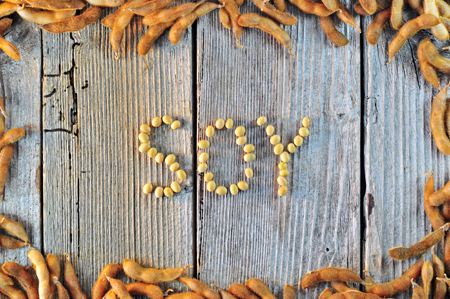Column: Brazil Still in Need of Rain as Soybean Planting Plods Along
Category: Grains

(Reuters) – Brazil officially began the soybean planting season in mid-September, but it has been slower than normal this year due to the dry conditions, and the forecasts are still not certain when farmers will be out of the woods.
On Tuesday, No. 2 producer Parana in the country’s south reported about 10% of the intentions had been planted. That is the slowest start in seven years and well off last year’s record pace of 29%.
A week ago, top grower Mato Grosso in the country’s Center-West had less than 2% of the crop planted, just below the recent average. State agency IMEA should update progress on Friday.
Historically, these states do not reach the halfway mark on planting until later in October, so there is still time to recover. The last 10 years of data suggest that a late soy planting pace did not have a significant bearing on yields in Parana or Mato Grosso, but the soybean timing did impact second-crop corn yields.
Planting pace aside, the soils remain awfully dry, as rainfall between June and August was the lightest in over two decades. Now, as the dryness lingers into the growing season, the trend appears more alarming for Parana based on the latest weather update.
September rainfall was below normal for the fifth straight month in Mato Grosso and fourth straight for Parana. Both the American and European weather models had incorrectly predicted how last month would end in terms of precipitation.
In Mato Grosso’s crop-heavy northern region, September precipitation was 22% below the five-year average. As of Sept. 19, the American model had projected it to finish at 70% below and the European model suggested above average.
In Parana, last month’s rainfall was 33% below average, and the Sept. 19 model runs suggested 48% below for the American and through Sept. 28, some 13% below for the European.
As of midday Thursday, both models agree that Parana will remain parched in the coming days. The American model suggested 75% below normal rainfall through Oct. 18, and the European model had an even drier trend through Oct. 12. The American model had been significantly wetter, but still lighter than normal, in several of the previous iterations.
The models still disagreed on Thursday over Mato Grosso. Through Oct. 18, the American model had precipitation 29% below normal, while the European model suggests two-thirds above normal through Oct. 12.
These forecast trends and their verification will be important to keep an eye on because while the Brazilian crops can still thrive following below-average moisture early in the season, the risk increases with each week and month that passes with less-than-expected rains.
A month ago, the U.S. Department of Agriculture saw Brazil’s soybean crop at a record 123 million tonnes, and analysts polled by Reuters around the same time agreed with the record prediction.
But it is still extremely early in the game. A year ago, a record crop seemed like the inevitable outcome. Final production slid to 117 million tonnes according to USDA, which last September had pegged the most recent harvest at 120.5 million.
Parana contributed heavily to the disappointing performance. Despite the quick start to planting last year, soybean yields in the state ultimately fell 13% below the long-term trend, the worst result in seven years after weather turned unfavorable further into the season.
State agency DERAL reported on Tuesday that production in Parana could increase by 23% over the previous year, and that is due almost entirely to better expected yields.




